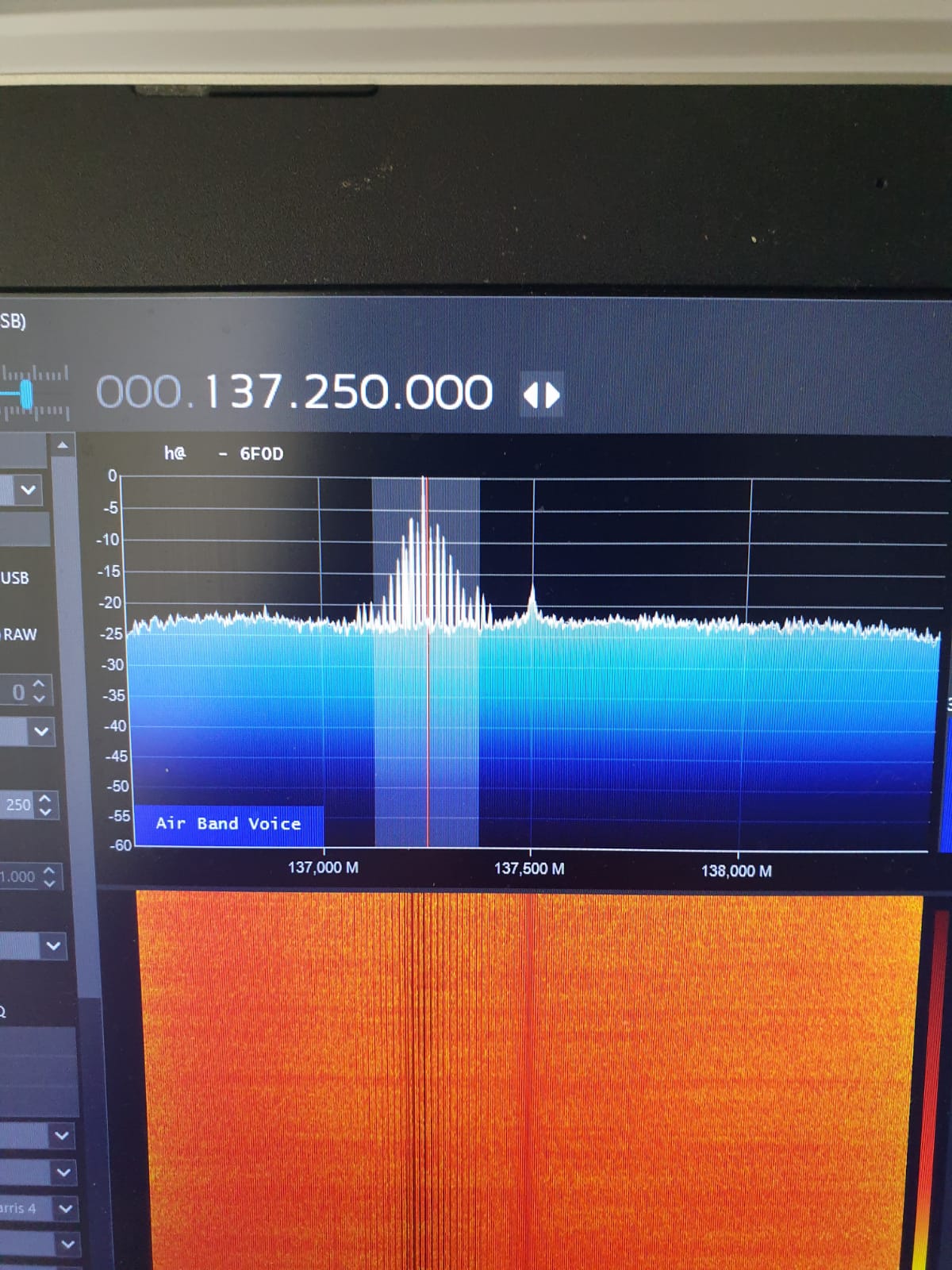I am a newbie trying to detect NOAA 15, 18, and 19 satellites, which have downlink frequencies between 137 MHz and 138 MHz. I am using an SDR dongle and attached a photo of it to this post.

Of course, I will be constructing an antenna specified for the 137 MHz later. However, I wanted to see if I could observe anything with this configuration. Observing the 137-138 MHz band, I observed an interesting pattern, which seems like a sinc function as if some square signal is multiplied with a sinusoidal signal. Here is a photo of my observation below.
Now here are my questions about these:
-> What this frequency might be about? I can detect it inside my house and outside as well. I looked it up and could not find a corresponding signal. Is this something caused by my setup? How can I observe NOAA satellites with similar frequencies?
-> There is also a peak that I could not decode at 137.5 MHz. Seemed like an FM signal to me but not sure. Do you have any idea on that as well?
Any idea would help if you have an opinion on what these signals might be about. Take care in the quarantine times.